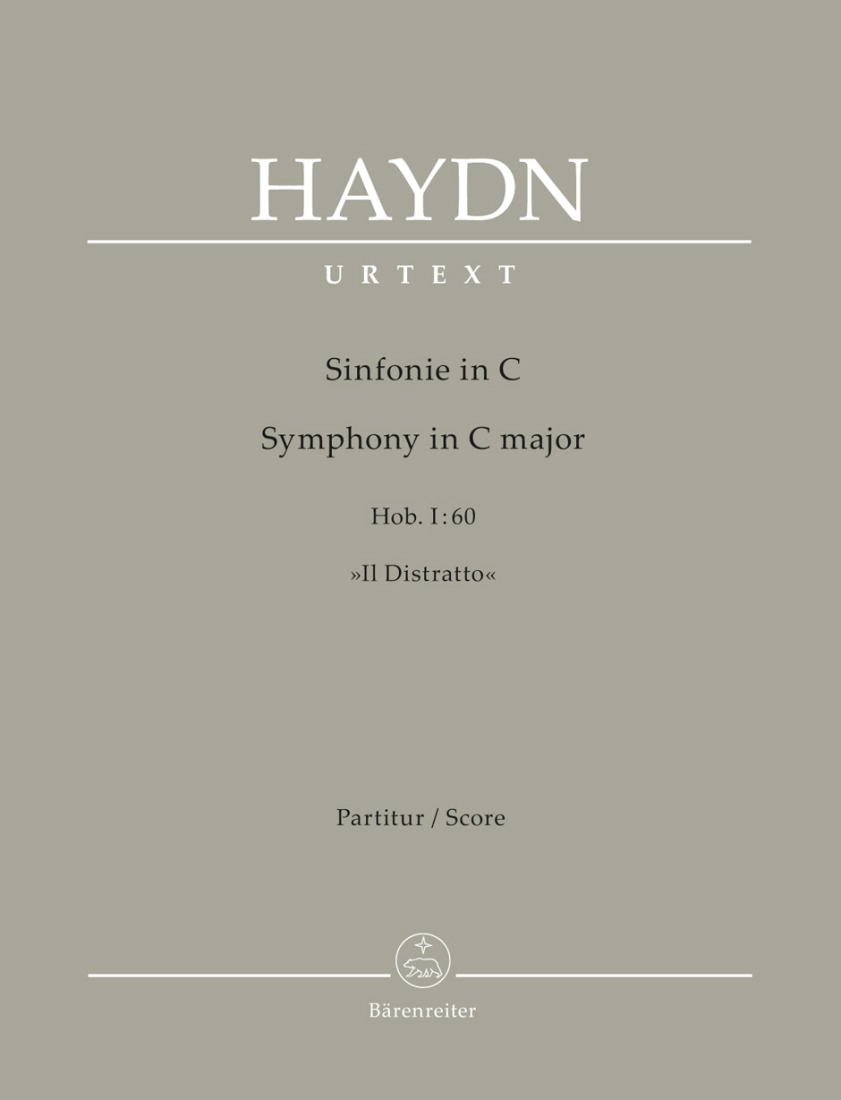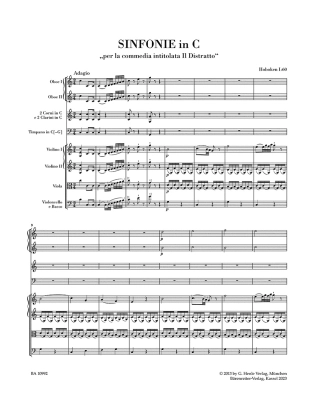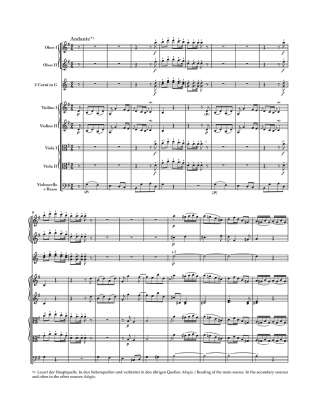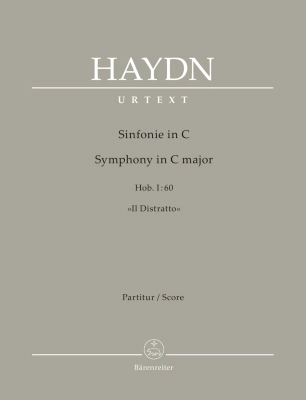Opens in a new window
Baerenreiter Verlag Symphony in C major Hob. I:60 ''Il Distratto'' - Haydn /Friesenhagen /Wilker - Full Score - Book

Additional Photos:


- Composer/Author: HAYDN, FRANZ JOSEPH
- Instrumentation: FULL SCORE
- Model # BA10992
Editors: Andreas Friesenhagen, Ulrich Wilker
Format: Book, Urtext Edition
Version: Full Score
The six movements of Joseph Haydn's Symphony No. 60 "Il Distratto" once served as incidental music for the comedy "Le Distrait" by Jean-Franois Regnard (1655-1709), which was performed at the Esterhazy court in 1772. This consisted of an overture, four entr'actes -- the play is in five acts -- and a finale.
But this composition is not merely a compilation of stage music: Haydn referred to it in letters as a symphony. As a "character symphony", it takes up the subject of the play -- human absentmindedness -- which is expressed in music. The minuet and trio of the symphony, with their stylistic diversity (or rather lack of plan), "portray the musicians in great disarray" as a reviewer stated in the Pressburger Zeitung of 27 January 1776. He also wrote, "One must laugh out loud at the thought of it" concerning the final movement, in which the violins unexpectedly begin to tune their instruments after a few opening measures. These and other compositional effects make the symphony a prime example of Haydn's musical humour and ingenuity.
In continuation of the cooperation between Baerenreiter and G. Henle Verlag regarding Haydn's large-scale choral works, operas and symphonies, these editions are based on G. Henle Verlag's complete edition "Works of Joseph Haydn".
Contents:
- Preface
- Sinfonie in C
- 1. Adagio Presto
- 2. Andante
- 3. Menuetto non troppo Presto Trio
- 4. Presto
- 5. Adagio
- 6. Finale. Prestissimo
Q & A
There are currently no questions for this product.
Reviews
There are currently no reviews for this product. Be the first to write one!





